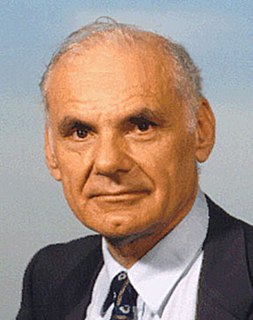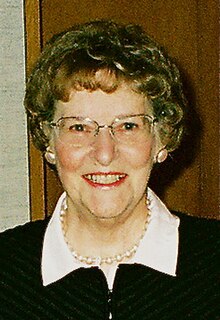The end-to-end principle is a design framework in computer networking. In networks designed according to this principle, application-specific features reside in the communicating end nodes of the network, rather than in intermediary nodes, such as gateways and routers, that exist to establish the network.

BBN Technologies is an American high-technology company that provides research and development services. BBN is based next to Fresh Pond in Cambridge, Massachusetts, United States. It is a military contractor, primarily for DARPA, and also known for its 1978 acoustical analysis for the House Select Committee on the assassination of John F. Kennedy. BBN of the 1950s and 1960s has been referred to by two of its alumni as the "third university" of Cambridge, after MIT and Harvard. In 1966, the Franklin Institute awarded the firm the Frank P. Brown Medal.
The Network Control Program (NCP) provided the middle layers of the protocol stack running on host computers of the ARPANET, the predecessor to the modern Internet.

Robert Elliot Kahn is an American electrical engineer, who, along with Vint Cerf, invented the Transmission Control Protocol (TCP) and the Internet Protocol (IP), the fundamental communication protocols at the heart of the Internet.
Richard Henry Bolt Ph.D., better known as Richard Bolt or Dick Bolt, was an American physics professor at MIT with an interest in acoustics. He was one of the founders of the company Bolt, Beranek and Newman, which built the ARPANET, a forerunner of the internet.
Leonard Kleinrock is an American computer scientist. A professor at UCLA's Henry Samueli School of Engineering and Applied Science, he made several important contributions to the field of computer networking, in particular to the theoretical foundations of computer networking. He played an influential role in the development of the ARPANET, the precursor to the Internet, at UCLA.
Severo M. Ornstein is a retired computer scientist and son of Russian-American composer Leo Ornstein. In 1955 he joined MIT's Lincoln Laboratory as a programmer and designer for the SAGE air-defense system. He later joined the TX-2 group and became a member of the team that designed the LINC. He moved with the team to Washington University in St. Louis where he was one of the principal designers of macromodules.
The Pluribus multiprocessor was an early multi-processor computer designed by BBN for use as a packet switch in the ARPANET. Its design later influenced the BBN Butterfly computer.
The Interface Message Processor (IMP) was the packet switching node used to interconnect participant networks to the ARPANET from the late 1960s to 1989. It was the first generation of gateways, which are known today as routers. An IMP was a ruggedized Honeywell DDP-516 minicomputer with special-purpose interfaces and software. In later years the IMPs were made from the non-ruggedized Honeywell 316 which could handle two-thirds of the communication traffic at approximately one-half the cost. An IMP requires the connection to a host computer via a special bit-serial interface, defined in BBN Report 1822. The IMP software and the ARPA network communications protocol running on the IMPs was discussed in RFC 1, the first of a series of standardization documents published by the Internet Engineering Task Force (IETF).
The Network Voice Protocol (NVP) was a pioneering computer network protocol for transporting human speech over packetized communications networks. It was an early example of Voice over Internet Protocol technology.

Lawrence Gilman Roberts was an American engineer who received the Draper Prize in 2001 "for the development of the Internet", and the Principe de Asturias Award in 2002.
Telenet was an American commercial packet switched network which went into service in 1974. It was the first packet-switched network service that was available to the general public. Various commercial and government interests paid monthly fees for dedicated lines connecting their computers and local networks to this backbone network. Free public dialup access to Telenet, for those who wished to access these systems, was provided in hundreds of cities throughout the United States.
The PROPHET system was an early medical expert system.
John M. McQuillan is an American computer scientist, known for studies of adaptive routing in the early ARPANET.

Elizabeth Jocelyn "Jake" Feinler is an American information scientist. From 1972 until 1989 she was director of the Network Information Systems Center at the Stanford Research Institute. Her group operated the Network Information Center (NIC) for the ARPANET as it evolved into the Defense Data Network (DDN) and the Internet.
Remote Spooling Communications Subsystem or RSCS is a subsystem of IBM's VM/370 operating system which accepts files transmitted to it from local or remote system and users and transmits them to destination local or remote users and systems. RSCS also transmits commands and messages among users and systems.

Frank Evans Heart was an American computer engineer, who, along with a team of others, designed the first routing computer for the ARPANET, the predecessor to the Internet.






